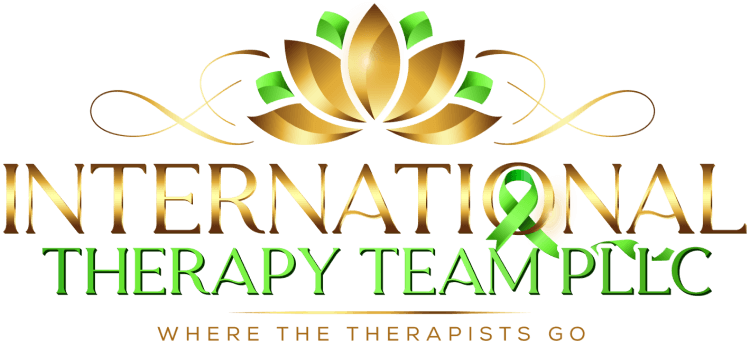1. Understanding the Basics of DBT Therapy
DBT therapy, short for Dialectical Behavior Therapy, is a type of cognitive-behavioral therapy that focuses on teaching individuals new skills to manage painful emotions and decrease conflict in relationships. It’s a unique approach that combines acceptance and change strategies to help people cope with overwhelming emotions effectively. The core idea behind DBT therapy is finding a balance between accepting yourself as you are while also working towards change and growth.
One critical aspect of DBT therapy is the emphasis on validation. This means acknowledging and accepting a person’s thoughts, feelings, and behaviors as understandable responses to their environment and experiences. Validation is not agreement but rather a way to show empathy and understanding. It helps individuals feel heard and respected, fostering a sense of trust in the therapeutic process.
In DBT therapy, dialectics play a significant role. Dialectics involve recognizing and accepting that two seemingly contradictory perspectives can both be valid at the same time. This approach encourages individuals to embrace the gray areas of life and relationships, moving away from black-and-white thinking. By integrating opposing viewpoints, people can find more balanced and nuanced ways to approach challenging situations.
2. Recognizing and Managing Your Emotions
Emotions are an essential part of the human experience, but they can become overwhelming and confusing, especially for those struggling with mental health issues. DBT therapy provides individuals with practical tools to identify, label, and regulate their emotions effectively. By enhancing emotional literacy, people can better understand the root causes of their feelings and respond to them in healthier ways.
Mindfulness is a core component of emotion regulation in DBT therapy. It involves being present in the moment without judgment, allowing individuals to observe their thoughts and feelings without becoming overwhelmed by them. By practicing mindfulness regularly, people can develop a greater sense of self-awareness and emotional control, leading to more adaptive responses to challenging situations.
Self-soothing techniques are another vital aspect of managing emotions in DBT therapy. These strategies help individuals calm and comfort themselves when feeling distressed or overwhelmed. From deep breathing exercises to engaging in soothing activities, self-soothing practices empower individuals to take control of their emotional state and prevent impulsive reactions.
3. Developing Mindfulness Practices
Mindfulness is a powerful tool that can enhance your overall well-being and quality of life. In DBT therapy, mindfulness practices are integrated into various techniques to help individuals stay grounded and centered in the present moment. By cultivating mindfulness, you can become more attuned to your thoughts, emotions, and physical sensations, fostering a deeper sense of self-awareness.
One simple yet effective mindfulness exercise involves focusing on your breath. By paying attention to the sensation of each inhale and exhale, you can anchor yourself in the present moment and quiet your mind. This practice not only reduces stress and anxiety but also improves your ability to regulate emotions and make conscious choices in your responses.
Body scan meditation is another valuable mindfulness technique used in DBT therapy. This practice involves systematically directing your attention to different parts of your body, noticing any tension or discomfort, and allowing yourself to release any physical or emotional stress. By practicing body scan meditation regularly, you can cultivate a profound sense of relaxation and enhance your mind-body connection.
4. Improving Interpersonal Relationships Through DBT Techniques
Healthy relationships are essential for our well-being, but they can also be a significant source of stress and conflict. DBT therapy offers practical strategies to improve interpersonal communication, set boundaries, and resolve conflicts constructively. By learning effective communication skills and practicing empathy and validation, individuals can cultivate more fulfilling and harmonious relationships.
Validation is a key component of fostering deeper connections with others in DBT therapy. By actively listening, acknowledging feelings, and showing empathy without judgment, you can create a supportive and validating environment for your loved ones. This simple yet powerful gesture can strengthen bonds and enhance mutual understanding in any relationship.
Interpersonal effectiveness skills taught in DBT therapy focus on helping individuals assert their needs, set boundaries, and navigate social interactions confidently. By learning how to communicate assertively, say no when necessary, and negotiate effectively, you can build healthier and more balanced relationships based on mutual respect and understanding.
5. Coping Strategies for Distress Tolerance
Distress tolerance skills are crucial for managing intense emotions and navigating crisis situations effectively. In DBT therapy, individuals learn coping strategies to tolerate distress without resorting to harmful behaviors. From self-soothing techniques to creating a distraction plan, these tools empower people to ride the wave of emotions without being overwhelmed by them.
One valuable distress tolerance technique used in DBT therapy is the TIP skill, which stands for Temperature, Intense exercise, and Paced breathing. This tool helps individuals regulate their emotions by changing their physical state. By taking a cold shower, engaging in vigorous exercise, or practicing deep breathing, you can shift your emotional experience and regain a sense of control.
Radical acceptance is a fundamental concept in distress tolerance within DBT therapy. It involves fully accepting the reality of a situation without judgment or resistance, even when it is painful or challenging. By embracing radical acceptance, individuals can let go of futile struggles against reality and find peace in the present moment, allowing them to move forward with resilience and strength.
6. Enhancing Self-Awareness and Self-Validation Techniques
Self-awareness is the cornerstone of personal growth and emotional regulation. In DBT therapy, individuals are encouraged to explore their thoughts, beliefs, and motivations to gain deeper insights into themselves. By practicing self-reflection and journaling, you can enhance your self-awareness and develop a more compassionate and authentic relationship with yourself.
Self-validation is a crucial skill taught in DBT therapy to help individuals cultivate self-compassion and acceptance. By acknowledging your feelings and experiences as valid and understandable, you can foster a sense of inner validation and reduce self-criticism. This practice empowers you to embrace your vulnerabilities and strengths with kindness and understanding.
Setting boundaries is another essential aspect of self-care and self-validation in DBT therapy. By establishing clear boundaries in your relationships and communication, you protect your emotional well-being and honor your needs and values. Boundaries help you maintain a healthy sense of self-respect and create space for authentic connections based on mutual respect and understanding.
7. Applying Behavior Chain Analysis in Your Daily Life
Behavior chain analysis is a valuable tool used in DBT therapy to understand the sequence of events and emotions that lead to a specific behavior. By breaking down complex behaviors into smaller components, individuals can identify triggers, thoughts, and consequences associated with their actions. This analysis helps uncover patterns and beliefs that influence behaviors, paving the way for change and growth.
In behavior chain analysis, individuals are encouraged to examine the antecedents that precede the behavior, the behavior itself, and the consequences that follow. By gaining insights into the chain of events, people can develop a deeper understanding of their motivations, emotional reactions, and coping mechanisms. This awareness empowers individuals to make conscious choices and take control of their behavioral patterns.
Behavior chain analysis is not about blame or judgment but rather about understanding and learning. It provides individuals with a roadmap to investigate the factors contributing to their behaviors and helps them develop more adaptive ways of responding to challenging situations. By applying behavior chain analysis in your daily life, you can cultivate self-awareness and make positive changes towards your goals.
8. Utilizing Opposite Action to Manage Unhelpful Impulses
Opposite action is a powerful DBT technique that involves acting opposite to what your emotions urge you to do. This strategy is especially helpful when dealing with unhelpful impulses or intense emotions that lead to maladaptive behaviors. By consciously choosing to behave in a way that is opposite to your emotional urges, you can disrupt negative patterns and create new pathways for healthier responses.
For example, if you feel the urge to withdraw and isolate when you’re feeling sad, opposite action would involve reaching out to a friend or engaging in a social activity. By going against the grain of your impulses, you can challenge unhelpful patterns and build resilience in managing difficult emotions. Opposite action helps you create new experiences and responses that align with your long-term well-being.
Opposite action requires courage and commitment to change ingrained habits and responses. By practicing this technique regularly, you can rewire your brain’s automatic reactions and develop more adaptive coping strategies. Over time, opposite action can empower you to break free from self-destructive patterns and embrace healthier ways of engaging with your emotions and the world around you.
9. Understanding the Role of Dialectics in DBT Therapy Techniques
Dialectics are central to the therapeutic approach of DBT therapy, emphasizing the balance between acceptance and change. This concept recognizes that life is full of contradictions and opposing truths that can coexist. Dialectics encourage individuals to hold multiple perspectives and find synthesis in seemingly conflicting ideas, fostering growth and transformation.
In DBT therapy, dialectics help individuals challenge rigid thinking patterns and develop flexibility in their beliefs and attitudes. By recognizing the validity of different viewpoints and embracing complexity, people can expand their capacity for empathy, understanding, and problem-solving. Dialectics promote a balanced approach to life’s challenges, offering a nuanced way to navigate uncertainties and conflicts.
By integrating dialectical thinking into your daily life, you can cultivate resilience and adaptability in the face of adversity. Embracing the dialectical principle of ‘both-and’ rather than ‘either-or’ allows you to explore multiple possibilities and solutions to complex problems. This mindset shift opens up new pathways for personal growth and paves the way for greater emotional intelligence and well-being.
10. Improve Your Emotion Regulation Skills with DBT Strategies
Emotion regulation is a core component of DBT therapy, focusing on helping individuals manage intense emotions effectively. By learning specific strategies and techniques, you can develop skills to identify, label, and modulate your emotional experiences. Improving emotion regulation allows you to respond to situations with clarity and thoughtfulness rather than react impulsively or emotionally.
One key emotion regulation skill in DBT therapy is the concept of PLEASE MASTER, which stands for treating Physical illness, balancing Eating, avoiding mood-Altering substances, getting the right amount of Sleep, and engaging in regular physical Exercise. By attending to these fundamental aspects of self-care, individuals can enhance their emotional well-being and resilience.
Learning distress tolerance techniques is another crucial part of improving emotion regulation with DBT strategies. By developing healthy coping mechanisms to navigate distressing situations, you can prevent emotional overwhelm and impulsive reactions. From grounding exercises to self-soothing techniques, distress tolerance skills empower you to stay emotionally balanced and avoid escalation in difficult moments.
11. Building Mastery and Engaging in Meaningful Activities
Building mastery is a key concept in DBT therapy that involves engaging in activities that challenge and fulfill you. By participating in tasks that align with your values and interests, you can enhance your sense of competence and self-esteem. Building mastery activities contribute to a sense of accomplishment and well-being, helping you develop new skills and confidence.
Engaging in meaningful activities is essential for maintaining a balanced and fulfilling life. In DBT therapy, individuals are encouraged to identify activities that bring them joy, fulfillment, and a sense of purpose. By investing time and energy in meaningful pursuits, you can nurture your emotional well-being, strengthen relationships, and create a life rich in experiences and connections.
From hobbies and creative pursuits to volunteering and social activities, engaging in meaningful activities contributes to your overall happiness and life satisfaction. By prioritizing activities that resonate with your values and aspirations, you can cultivate a sense of purpose and fulfillment that sustains you through life’s challenges and transitions.
12. Incorporating Radical Acceptance in Your Personal Growth Journey
Radical acceptance is a transformative practice in DBT therapy that involves fully embracing reality as it is without judgment or resistance. This principle encourages individuals to accept themselves, others, and situations exactly as they are, even when facing hardships or pain. Radical acceptance empowers you to let go of control and surrender to the present moment with compassion and openness.
Practicing radical acceptance requires a willingness to acknowledge and make peace with life’s imperfections and uncertainties. By letting go of the need for things to be different or better, you free yourself from the burden of constant struggle and resistance. Radical acceptance fosters inner peace and resilience, allowing you to navigate life’s challenges with grace and authenticity.
Embracing radical acceptance is a radical act of self-love and compassion. It involves releasing the grip of judgment and self-criticism, finding peace in the midst of chaos, and embracing your vulnerabilities and strengths with equanimity. By incorporating radical acceptance into your personal growth journey, you cultivate a profound sense of liberation and empowerment to live authentically and wholeheartedly.





